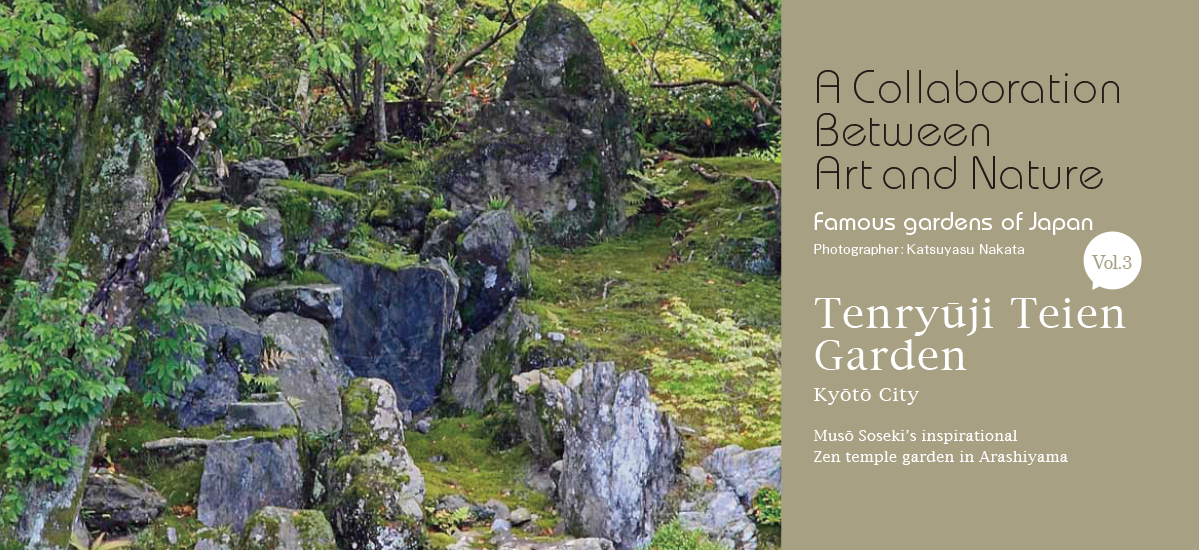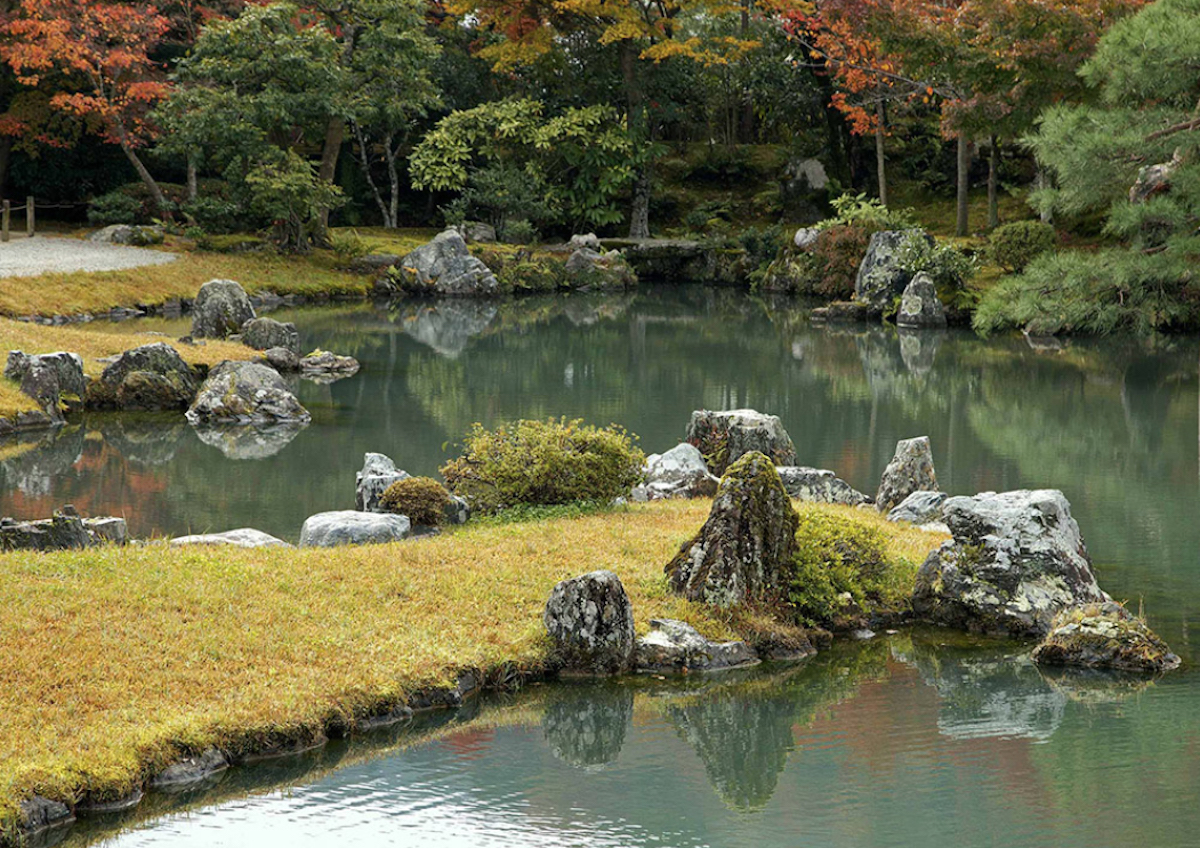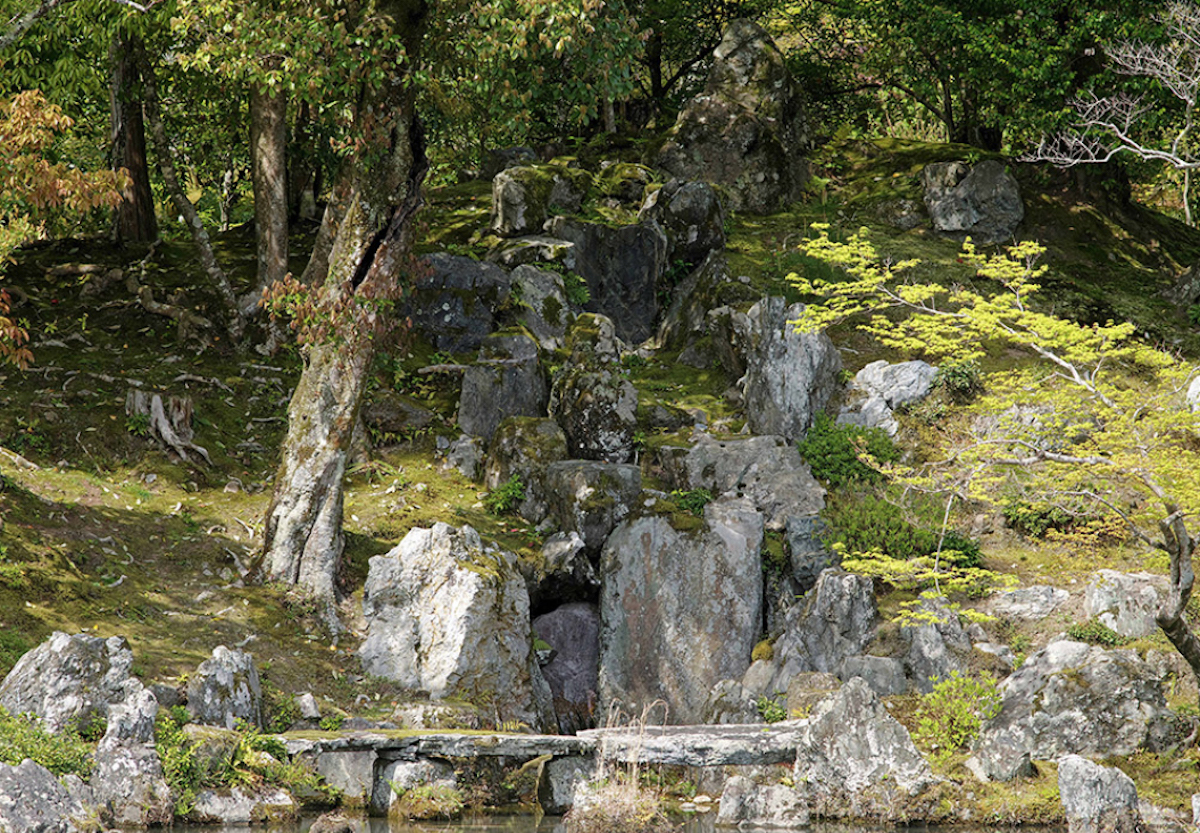

Richly endowed with majestic natural features and an abundance of changing seasonal colours, it is only natural that Japan should be perfectly suited to the creation of beautiful gardens. These gardens, inspired by nature, religion and the intellect, are reflections of the people who created them and the societies in which they lived. The gardens of Japan provide a fascinating window into the wider spiritual and intellectual principles that underpin their creation.
Text : Yūji Fujinuma / Photos : 中田勝康 Katsuyasu Nakata / English Version : Judy Evans
Keyword : Sagano / Temples / Kyōto / Karesansui / Musō Soseki / Tenryūji Teien Garden
Japan’s First Designated Historic Site and Special Place of Scenic Beauty
Kyōto’s Sagano district where, in days gone by, the aristocracy built their summer villas among the mountains and woods. Emperor Go-Saga had his imperial villa, Kameyama-dono, here during the Kamakura Period (1185 – 1333) and it was on this site at the beginning of the Muromachi Period (1336 – 1573) that priest and garden designer Musō Soseki suggested shōgun Ashikaga Takauji build a Zen temple. This temple, Tenryū-ji, was to be a memorial to Ashikaga’s old rival, Emperor Go-Daigo who had recently died. Constructing the temple complex required considerable funds and when all other financial avenues had been exhausted, the cash-strapped shogunate commissioned two trading ships, the Tenryūji-bune, to ply the trade route between Japan and China. The idea proved a resounding success and and the temple was officially consecrated in 1345. The temple grounds at that time were vast, some four hundred hectares, encompassing what are today the entire Kameyama and Tōgetsu-kyō Bridge areas. Soseki determined to incorporate views of the surrounding landscape into the garden, creating ten distinct vistas.
The garden, centred on the Sōgen-chi Pond, lies to the west of the Hōjō main temple hall. On the opposite side of the pond, at the base of a wooded slope, is the Ryūmon-baku (Dragon’s Gate Waterfall), an arrangement of rocks representing the Chinese fable of carp that swim upstream, leaping over the dragon’s gate at the top of a waterfall, whereupon they are transformed into powerful dragons – an allegory for the difficult path to enlightenment.
The rigyoseki (carp fish stone), a rock in the centre of the group, represents those determined carp. Although this is now a dry rock formation, the garden once echoed with the sound of water splashing over the Ryūmon-baku.

At the base of the waterfall is Sanbashi, a bridge formed by the placement of three flat rocks. This is thought to be the earliest example of a stone bridge in a Japanese garden. The three rocks of the Sanbashi bridge represent the teachings of the three philosophies of Buddhism, Confucianism and Daoism. It is said that those who acquire a true understanding of these teachings will, freed from their earthly desires, reach Nirvana. The Ryūmon-baku waterfall and Sanbashi stone bridge are more or less directly opposite the Hōjō hall. Intended to be viewed while seated here in meditation, it could be said that Tenryū-ji Teien garden embodies Soseki’s devotion to the strict practice of Zen Buddhism.

Tenryū-ji Teien Temple Garden
Pond garden; rock garden; historical landmark; place of special scenic beauty.
Address: Saga-Tenryūji 6-8, Susukinobaba-chō, Ukyō-ku, Kyōto City.
Phone: 075-991-1235
Website: www.tenryuji.com/en/index.html
Hours: Summer8:30am-5:30pm(north gate entrance closes at 5:00pm); Winter (Oct.21-Mar.20)8:30am-5:00pm(north gate entrance closes at 4:30 pm)
Admission: Garden 500 yen; an extra 300 yen to visit the temple.
Access
By rail: JR Sagano Line – 13 mins walk from Saga-Arashiyama Station; Keifuku Dentetsu Arashiyama Line – 3 mins walk from Arashiyama Station; Hankyū Line – 15 mins walk from Arashiyama Station.
By bus: Shi Bus Line – take bus numbers 11, 28, or 93 and get off at the Arashiyama Tenryu-ji Mae bus stop; Kyoto Bus Line – take bus numbers 61, 72, or 83 and get off at the Arashiyama Tenryu-ji Mae bus stop








